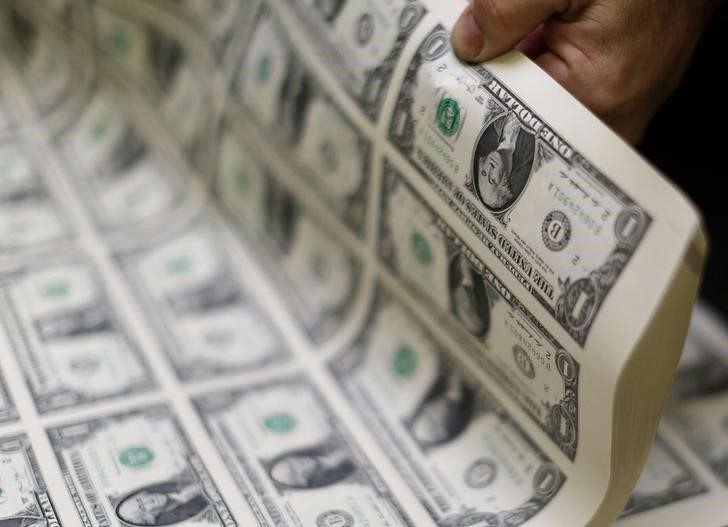Investing.com - The dollar remained mostly lower against a basket of other major currencies on Wednesday, as markets eyed the Federal Reserve's highly-anticipated policy statement due later in the trading session.
The Fed is widely expected to start raising interest rates around mid-year and investors were expecting the U.S. central bank to drop its reference to being “patient” on the timing of a rate hike in its policy statement.
The U.S. dollar index, which measures the greenback’s strength against a trade-weighted basket of six major currencies, was down 0.31% to 99.73, still close to Friday's highs of 100.78, the strongest since September 2003.
EUR/USD rose 0.22% to 1.0617.
The euro found support on Tuesday after data showed that German economic sentiment improved to the highest level in 13 months in March. The ZEW Centre for Economic Research said that its index of German economic sentiment rose to 54.8 this month from February’s reading of 53.0.
Another report showed that euro zone consumer price inflation fell 0.3% last month, in line with expectations and unchanged from a preliminary estimate. The rate remains firmly below the European Central Bank's target of near but just below 2%.
The dollar was lower against the yen and the Swiss franc, with USD/JPY down 0.40% to 120.88 and with USD/CHF dropping 0.90% to 0.9972.
Meanwhile, the dollar pushed higher against the pound, with GBP/USD sliding 0.60% to 1.4658.
In a report, the U.K. Office for National Statistics earlier said that the rate of unemployment was unchanged at 5.7% in the three months to January, disappointing expectations for a decline to 5.6%.
The report also showed that the claimant count fell 31,000 in February, compared to expectations for a decline of 30,000 people.
Data also showed that that the U.K. average earnings index, including bonuses, rose by 1.8% in the three months to January, missing forecasts for a gain of 2.2%.
In addition, the minutes of the Bank of England's most recent policy meeting showed that all nine members of the Monetary Policy Committee were in favor of leaving the key interest rate at a record low of 0.5% and making no changes to the central bank's £375 billion asset-purchase program.
The Australian and New Zealand dollars were stronger, with AUD/USD gaining 0.32% to 0.7641 and with NZD/USD climbing 0.73% to 0.7359.
Meanwhile, USD/CAD held steady to trade at 1.2794 after Statistics Canada reported that wholesale sales dropped 3.1% in January, compared to expectations for a 1.0% decline. December's figure was revised to a 2.8% increase from a previously estimated 2.5% rise.
